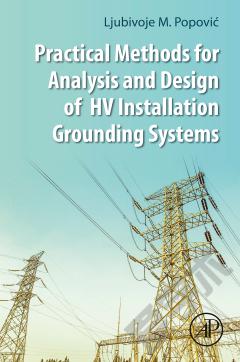Practical Methods for Analysis and Design of HV Installation Grounding Systems
Practical Methods for Analysis and Design of HV Installation Grounding Systems gives readers a basic understanding of the modeling characteristics of the major components of a complex grounding system. One by one, the author develops and analyzes each component as a standalone element, but then puts them together, considering their mutual disposition, or so-called proximity effect. This is the first book to enable the making and analysis of the most complex grounding systems that are typical for HV substations located in urban areas that uses relatively simple mathematical operations instead of modern computers. Since the presented methods enable problem-solving for more complex issues than the ones solved using National, IEC and/or IEEE standards, this book can be considered as an appendix to these standards.Develops general equations of lumped parameter ladder circuitsIncludes the analytical expression for determination of ground fault current distribution for a fault anywhere along a cable linePresents measurement and analytical methods for the determination of actual ground fault current distribution for high-voltage substations located in urban areasProvides the analytical procedure for the determination of the critical ground fault position for faults appearing in outgoing transmission linesDefines testing procedure for the correct evaluation of grounding systems of substations located in urban areas
{{comment.content}}








 京公网安备 11010802027623号
京公网安备 11010802027623号